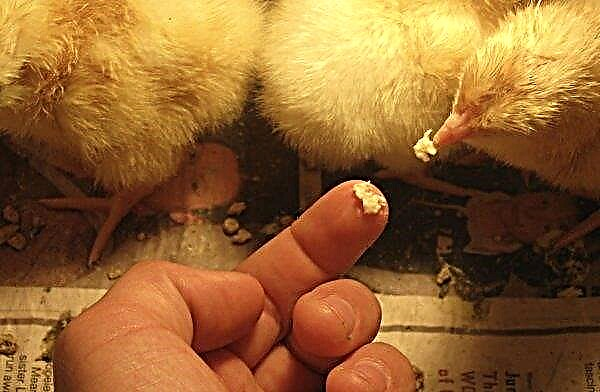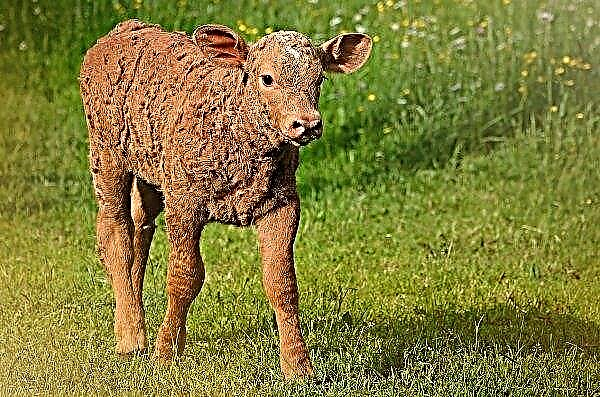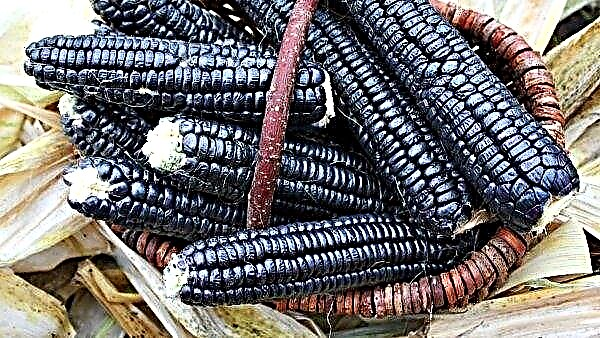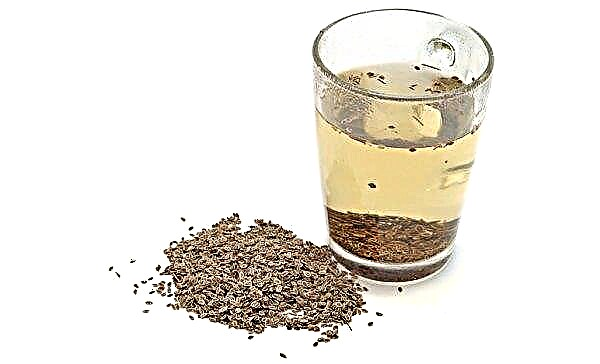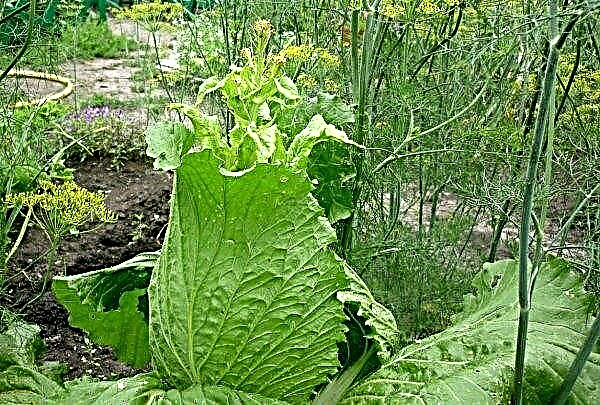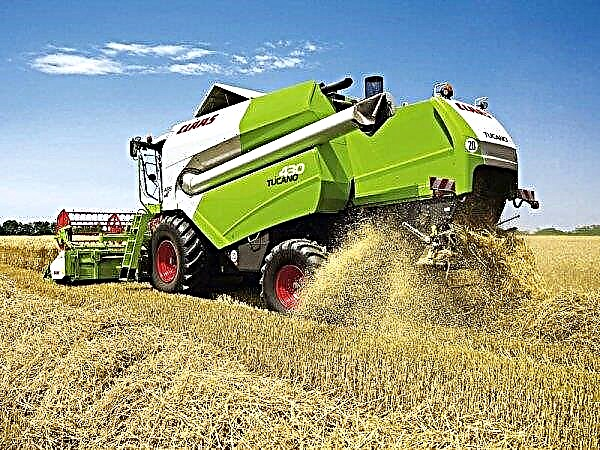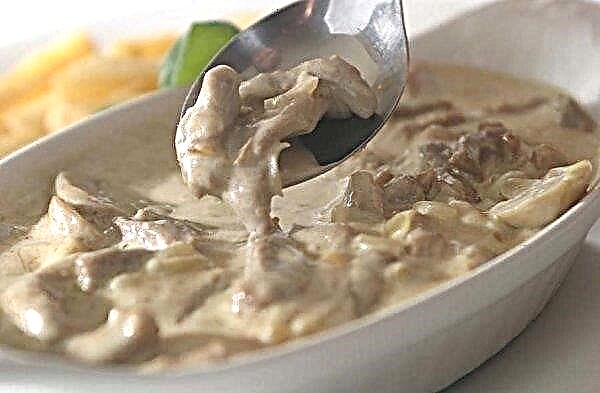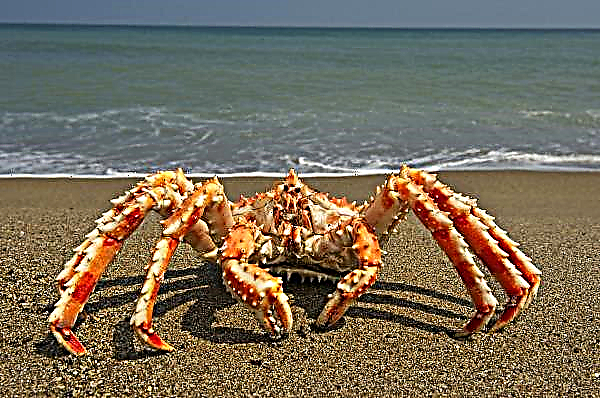Not so long ago, Moldovan breeders from the NGO Vierul developed a new Flamingo grape variety. With the pink color of the berries, it resembles a beautiful exotic bird. Consider the description of this variety, its positive characteristics, as well as the rules of agricultural technology.
Botanical description of the pink Flamingo variety
Flamingo appeared as a result of crossing varieties of Datier de Saint-Valle and Nimrang. Although he inherited from his parents some characteristic features, he still differs from them in simple taste and ease of cultivation.
Bushes and shoots
Flamingo bushes are medium-sized.
They can be recognized by the following signs:
- the vine grows on average up to 2-3 m;
- the foliage is large, rounded, has 3-5 blades;
- inflorescences consist of female-type flowers, the light pollen of which is easily carried by the wind, which provides 100% pollination and leads to fruitful overloads;
- fruiting shoots of 50–70%;
- on 1 shoot, 14 to 20 brushes are formed.

Grapes and berries
Bunches grow large, weighing 0.7–1 kg (sometimes up to 1.5 kg). The shape of the brush is conical, elongated, there are side “wings”. Berries in a bunch are not very densely picked. Due to looseness, ripe brushes need to be transported very carefully.
Distinctive characteristics of berries:
- the color of ripe grapes is pink and light pink (the brightness of the color depends on the amount of sunlight received);
- the shape is round and elongated;
- weight - 6-10 g, average size - 2.5 cm × 2.8 cm;
- the pulp is juicy and fleshy, the skin is thin;
- the presence of sugar - 15–16%, and acids - 7–9 g / l;
- the taste is simple, pleasant, without much taste.
Did you know? Interesting statistics: vineyards occupy about 80 thousand km² of the surface of our planet. Only 27% of the berries from the harvest are eaten fresh, 2% - in the form of raisins, and 71% goes to make wine.
Variety Characteristics
Creating new hybrids, breeders focus on some specific qualities that other varieties lack. Flamingos also have their own distinctive characteristics.
Ripening period
This pink grape is a mid-ripe table variety. Berries fully ripen in about 130-145 days. But the timing depends on the region. In the southern regions, the variety is medium early, in the northern regions - medium late, and in some places it simply does not have time to ripen, so in the middle lane it is recommended to plant it under the southern wall of the house. Better yet, immediately place it in a greenhouse on the south side.
Video: Flamingo grapes
The ripening period is also delayed due to overloading the bush. Flamingo is a very productive variety. If fruits are tied up on all hands, they will develop and ripen for a long time. In this regard, it is desirable to normalize the number of clusters on the shoots.
Frost resistance
The vine of this variety is frost-resistant, does not freeze even at a temperature of -22 ° C. To guarantee safety, it is better to lay it on the ground and cover it with some improvised material. And on the contrary, the bush is afraid of early frosts. Night frosts in September can damage fruits, leaves and young shoots and even ruin the entire crop.
Disease and pest resistance
The advantage of Flamingos is also its resistance to diseases and pests.
Experts evaluate at 3 points its resistance to such diseases:
- mildew (downy mildew);
- oidium;
- gray rot.
Did you know? The desired annual rate of consumption of table grapes for one person is 8-10 kg.
Planting Rules for Flamingos
Flamingo planting technology is standard for all varieties.
In this case, important points are taken into account:
- landing dates: in the fall (September or the beginning of October), in the spring (last year's lignified seedlings - in April, and new green ones - in May or June);
- sunny place, protected from drafts and strong winds (along the south wall of the house or closed from the wind by planting trees and bushes);
- the soil - fertile, loose, with neutral acidity;
- the pit is prepared in advance: for spring planting - in the fall, and for autumn - a month or two before planting.
Pit preparation:
- Dimensions: 80 cm × 80 cm × 80 cm.
- When digging, the fertile upper layer of the earth (1-2 bayonet shovels) is folded separately from the lower layer.
- A thick layer of drainage from rubble and sand is poured at the bottom.
- A 2/3 pit is filled with fertile soil mixed with fertilizers (2-3 bucket of humus or compost and 0.5 kg of nitroammophoska or 200 g of superphosphate, wood ash, 100 g of ammonium sulfate).
- A dug bottom layer of earth (10-15 cm) is laid out on top.
- Pour a bucket of water and leave until planting.
 Preparation of a one-year-old seedling:
Preparation of a one-year-old seedling:- cut off the shoot, leaving 3-4 kidneys on it;
- shorten the roots to 15 cm;
- put in a container with warm water (you can add a growth stimulator) for 2 days.
Landing process:
- In the pit with sagging soil, a spacious depression is made (40 cm from the ground).
- At the bottom of the recess, a mound is poured from fertile soil.
- Plant the heel planted on the mound, spreading the roots on it.
- Escape should be directed towards the trellis.
- Holding the stem with his hand, the pit is covered with earth so that the upper node is below the edges of the pit, but not filled.
- The earth is tamped and watered with 2 buckets of water.
- There should be a hole covered with mulch.
- Sapling planted in the winter, you need to hide from frost.
Important! Green seedlings are planted in a pit prepared in advance along with an earthen lump.
Features of care for Flamingo grapes
Flamingo belongs to unpretentious varieties and does not require special care.
Proper agricultural technology includes the following:
- watering is not frequent, as necessary (2 buckets of water about 1 time per week or two), which depends on the weather;
- organic dressing - after 3 years, and complex mineral fertilizers - annually;
- pruning is standard. In the middle lane, normalization (reduction in the number of brushes) and leaf tearing off near the bunches are very important so that the berries have time to ripen and accumulate enough sugar;
- due to frost resistance, it does not need shelter for the winter, if frosts below -22 ° C are not expected.

Pest and Disease Control
One of the advantages of Flamingos is a good resistance to diseases and some pests. Nevertheless, to ensure reliable protection, preventive treatment of the plant with chemical preparations is necessary.
If you use compatible fungicides and insecticides in the complex, you can reduce the number of sprayings. It is possible to combine the fungicides "Abiga Peak", "Quadrio Top", "Ridomil Gold", "Quadris Topaz" and the insecticides "Aktara" and "Calypso". Complex preparations such as Tiovit Jet already combine fungicides and insecticides.
Scheme of preventive spraying:Important! It is not recommended to treat Flamingos with growth stimulants based on the phytohormone gibberellin. The plant reacts poorly to it: peeling is intensified, the hands become rugged.
- With a shoot height of 10-15 cm (if necessary, you can repeat it in a month).
- Before flowering (repeat after 2 weeks).
- Spraying the ovaries (repeat after 2 weeks).

Pink Flamingo is becoming increasingly popular among winegrowers due to productivity, frost resistance and unpretentiousness. Nevertheless, he achieves the best results in areas with a warmer climate.

